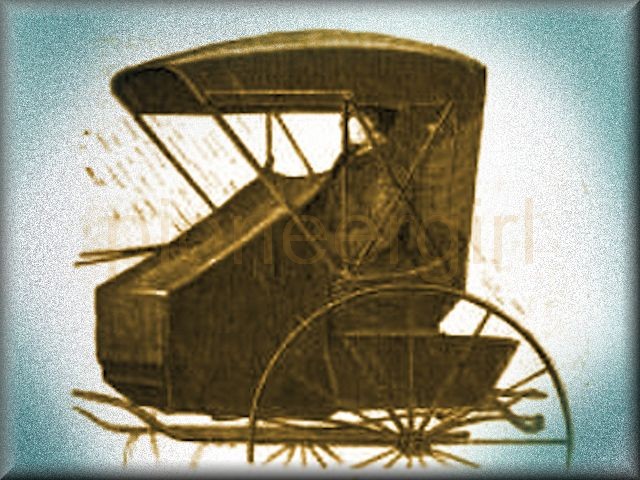storm apron

A piece of leather, or other thing, to be spread before a person riding in a gig, chaise, or sulky, to defend him from the rain, snow, or dust. — Webster, 1882
 Anyone who has ridden far in a carriage during a driving storm will appreciate the… apron of rubber, oil-cloth, or other waterproof material, so cut as to fit over and outside the dashboard. – Appleton’s Cycolpedia of Patents, 1892.
Anyone who has ridden far in a carriage during a driving storm will appreciate the… apron of rubber, oil-cloth, or other waterproof material, so cut as to fit over and outside the dashboard. – Appleton’s Cycolpedia of Patents, 1892.
 In These Happy Golden Years, Chapter 29, “Summer Storm,” Laura Ingalls and Almanzo Wilder are out for a Sunday buggy ride and are caught in a rain storm. As buggies have open sides and no windows such as today’s cars have for protection, the couple might have gotten horribly wet were it not for the clever curtains and storm apron that Almanzo stops and quickly attaches in place.
In These Happy Golden Years, Chapter 29, “Summer Storm,” Laura Ingalls and Almanzo Wilder are out for a Sunday buggy ride and are caught in a rain storm. As buggies have open sides and no windows such as today’s cars have for protection, the couple might have gotten horribly wet were it not for the clever curtains and storm apron that Almanzo stops and quickly attaches in place.
Black curtains are rolled down from the buggy top and are buttoned to side supports and the buggy bottom, closing off the back of the buggy. Other curtains protect the sides.
The storm apron typically was stored behind the dashboard of the buggy, and was easily unfolded and set in place so that it covered the front and sides of the dashboard, slanting upward to attach at about chest height of the driver and any passenger. There were most often slits and flaps through which to pass the lines so that the driver’s hands could remain out of the rain. Almanzo’s rubber storm apron was said to also have a slot for the whipsocket, so that the whip could remain in place if needed. Any rain falling against the apron rolled over the dashboard and to the ground.
Storm aprons were quite often sold with a buggy, especially to doctors or others who had to be able to drive in all sorts of weather, both good and bad. The buggy advertisement below appeared in an Aberdeen, Dakota Territory newspaper during the De Smet Little House years.


storm apron (THGY 29)

